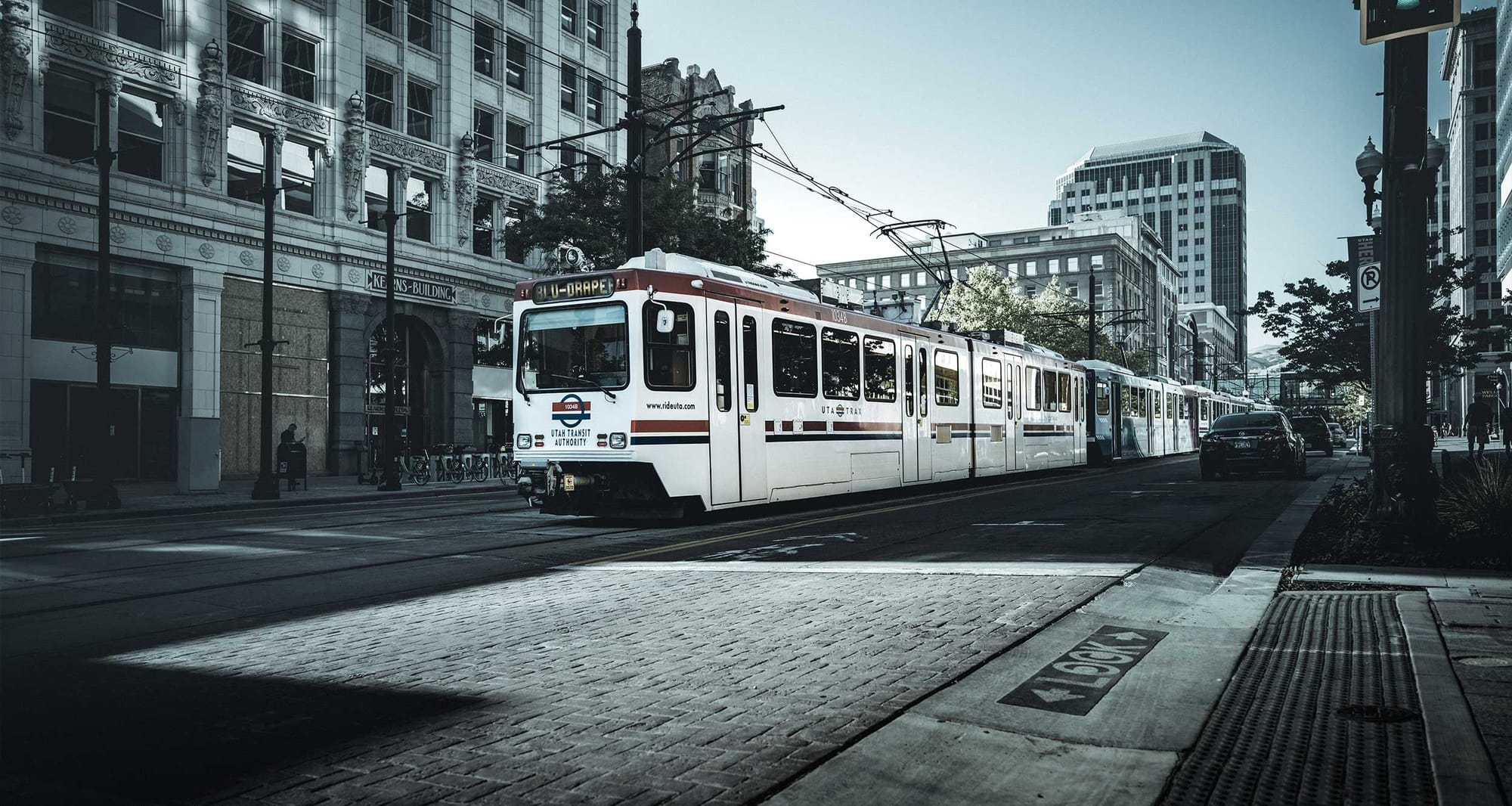
Public transportation in Salt Lake City is administered by the Utah Transit Authority (UTA) and consists of city bus, light rail and commuter rail systems, all of which are wheelchair accessible. For the majority of tourists, use of the commuter rail will not be necessary. Each of these transportation services are described below.
City Bus
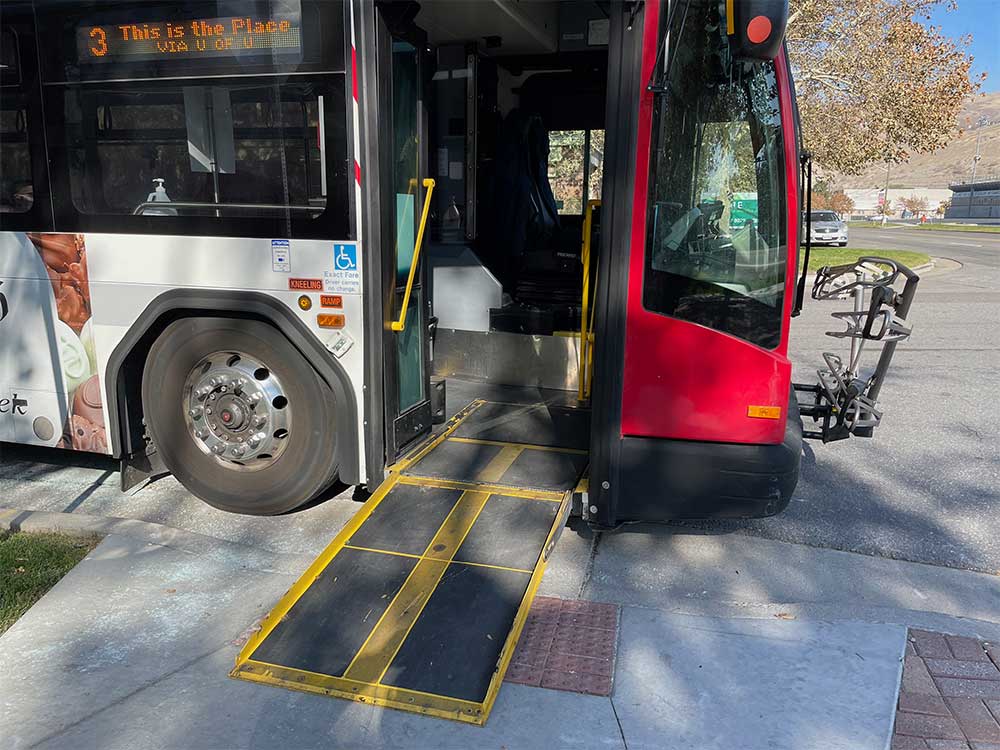
The SLC city bus network is comprised of more than 120 routes, ensuring that all parts of the city are covered with public transportation. Most UTA buses are modern, low-floor vehicles with a wheelchair ramp at the front door and two wheelchair securement spaces.
Some older coaches, outfitted with wheelchair lifts like those on a Greyhound Bus, are still used on some commuter bus routes connecting the suburbs and university campuses to downtown. Although loading a traditional motor coach will take more time than a low-floor city bus, the buses are wheelchair accessible. During my time in Salt Lake City, I visited most of the popular tourist sites and did not have to ride one of the commuter coaches.
TRAX Light Rail
The TRAX Light Rail system covers some 45 miles of track and provides service to 50 stations throughout the city and its suburbs. There are three separate lines, Blue, Red and Green.
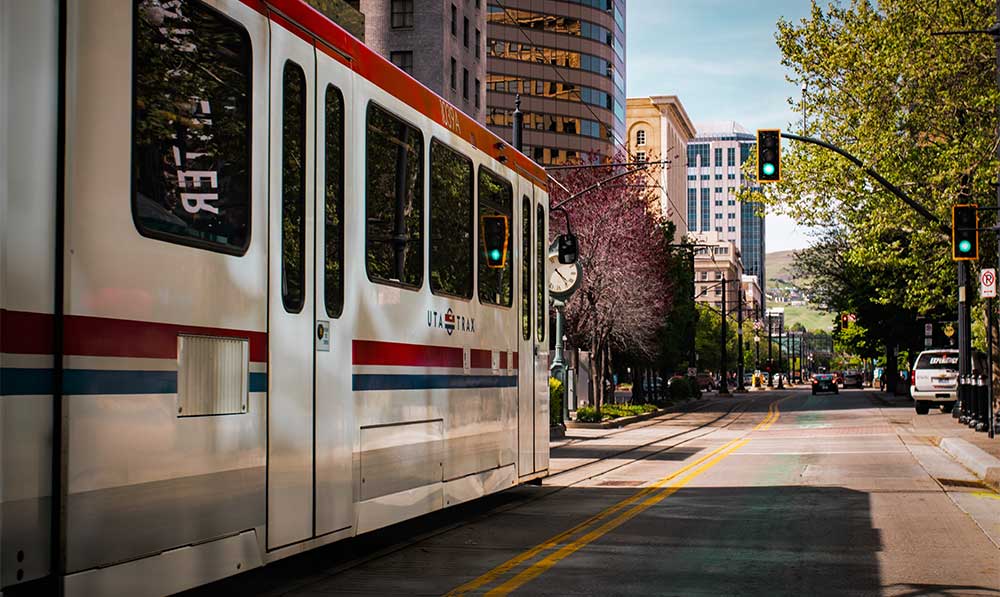
Each TRAX train is wheelchair accessible, but Blue line trains use older, high-floor cars with steps. Each Blue line station has a ramp for wheelchair users and people with limited mobility, located at the front of the platform. Disabled passengers should wait for the train at the top of the boarding ramp. When the train arrives, its operator will lay out a bridge plate to provide barrier-free access between the high boarding platform and train car.
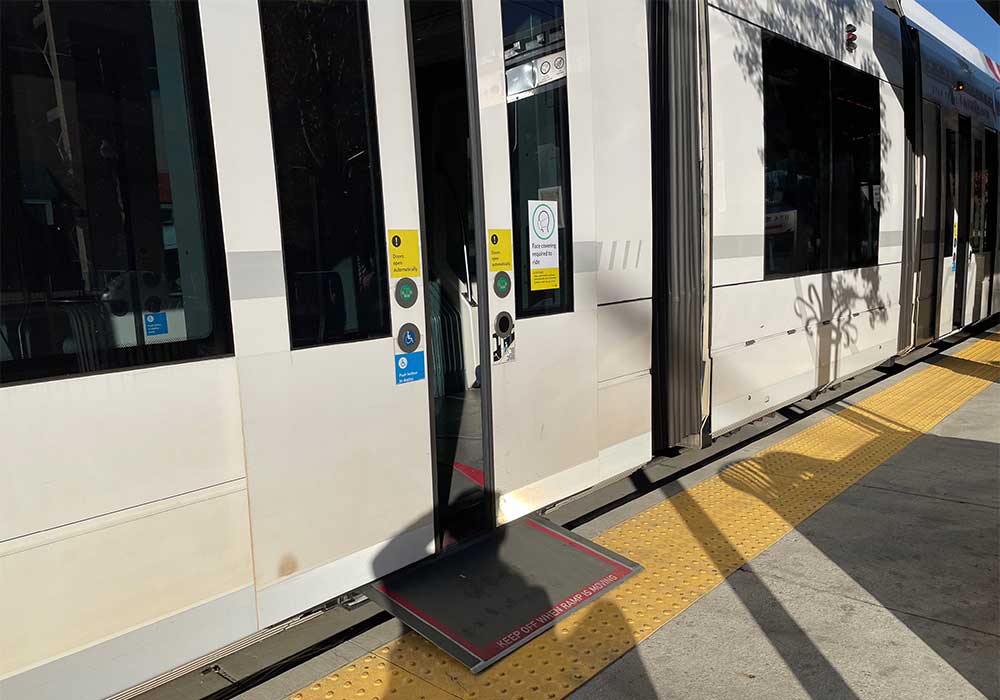
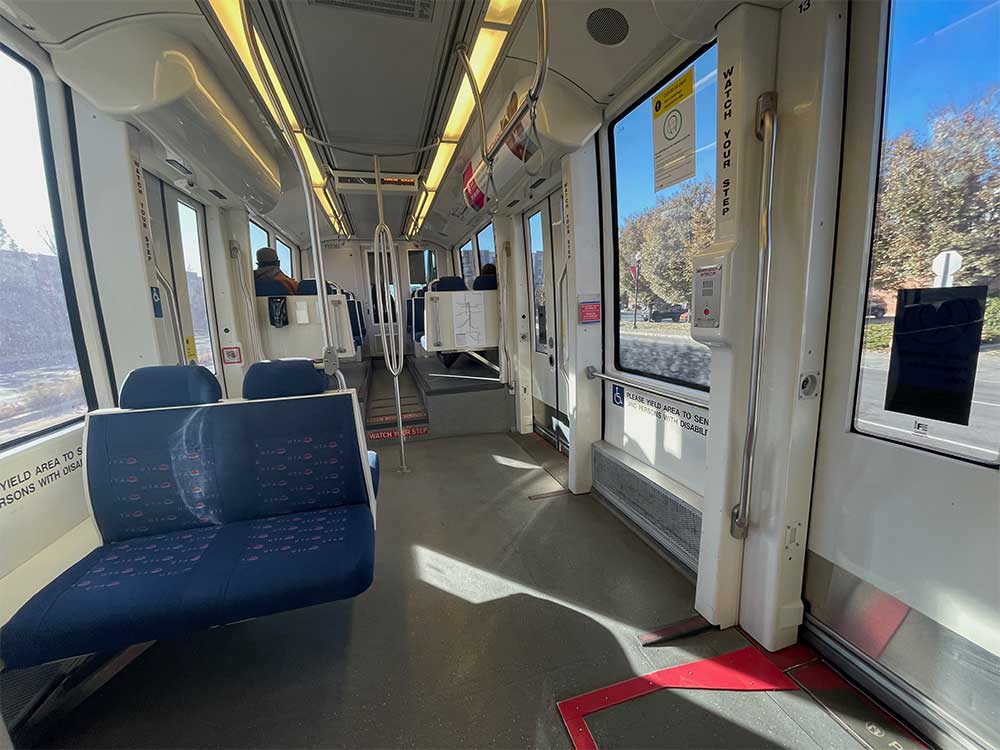
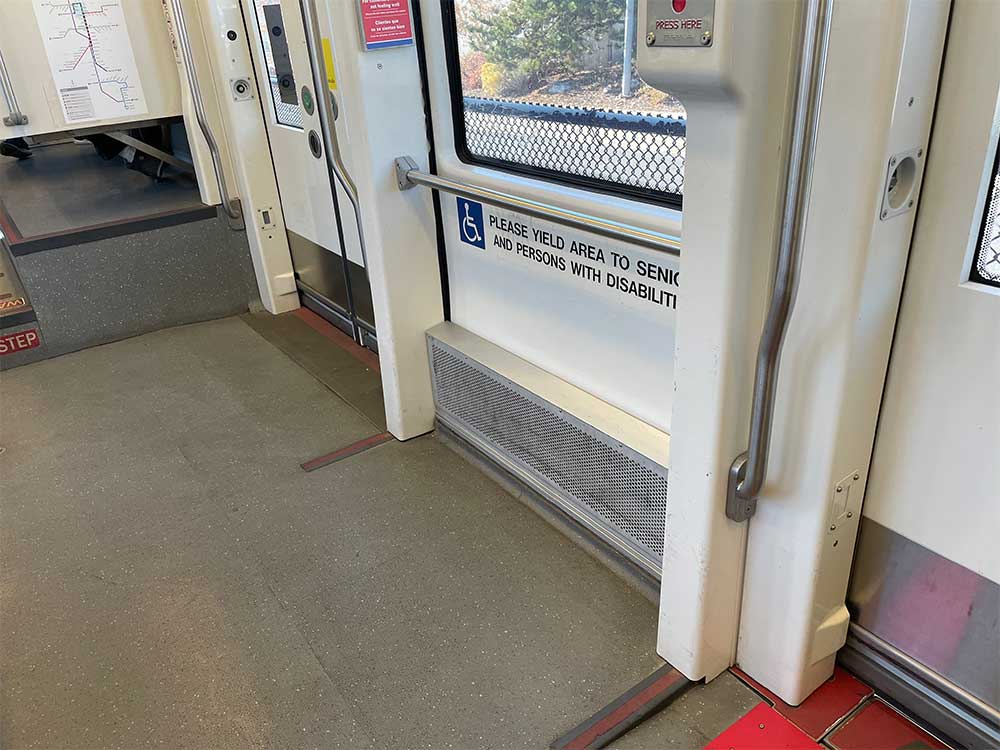
The Red and Green Lines use modern, low -floor trains with a small gap between the train and station platform. Wheelchair users should press the blue button on the train door to activate an automated ramp, which will deploy from the train out onto the station platform. Signs in the stations remind travelers of the following:
Boarding information: Use wheelchair access ramp for Blue line trains only. All other trains are low floor trains, board at platform level.
Every train has a designated space for wheelchair users to park, with the Red and Green line trains being a bit more spacious. There are no tie-downs, but the ride is smooth and a grab bar is provided.
FrontRunner Commuter Rail
UTA’s commuter rail line, FrontRunner, serves 16 stations along some 89 miles of track, connecting Salt Lake City with Ogden to the north and Provo to the south.
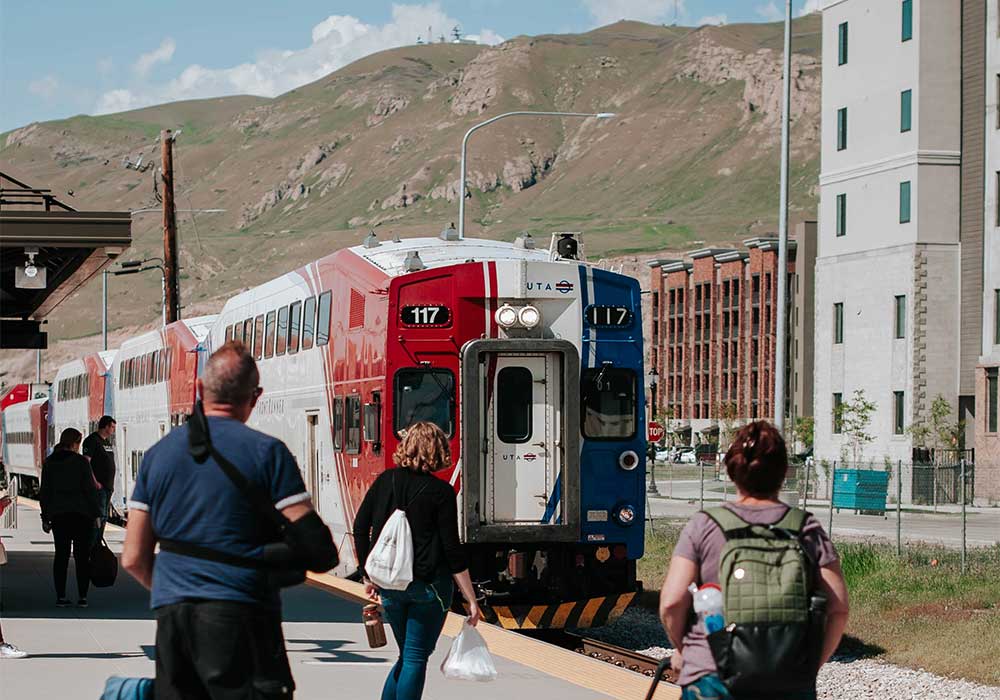
Every FrontRunner station is wheelchair accessible, as is every train set. Some older passenger cars are not accessible, but every train has at least one of the newer bi-level rail cars. One of the train’s conductors will be available to lay out a boarding ramp to bridge the gap between the train and station platform.
S-Line Streetcar
Opened in 2013, the S-Line is a short, two-mile long streetcar line connecting Salt Lake City’s Sugar House neighborhood with the city of South Salt Lake.
The S-Line has 7 stops. I have not personally tested the S-Line, but the city reports that the streetcars are wheelchair accessible. Riders can transfer between the S-Line and the TRAX light rail at Central Pointe station.
Route Maps and Fares
City bus, TRAX light rail, FrontRunner commuter rail and S-Line schedules and route maps can be reviewed at the UTA website.
The current cash fares for Salt Lake City public transportation are as follows:
Local Bus, TRAX and Streetcar
- One-way ride — $2.50 for adults, $1.25 for seniors/reduced fare
- Day Pass — $5 for all passengers
Express Bus (includes Local Bus, TRAX and Streetcar)
- One-way ride — $5.00 for adults, $2.50 for seniors/reduced fare
FrontRunner
- One-way base fare — $2.50 for adults, $1.25 for seniors/reduced fare
- Round-trip base fare — $5.00 for adults, $2.50 for seniors/reduced fare
- Each additional stop — $0.60 for adults, $0.30 for seniors/reduced fare
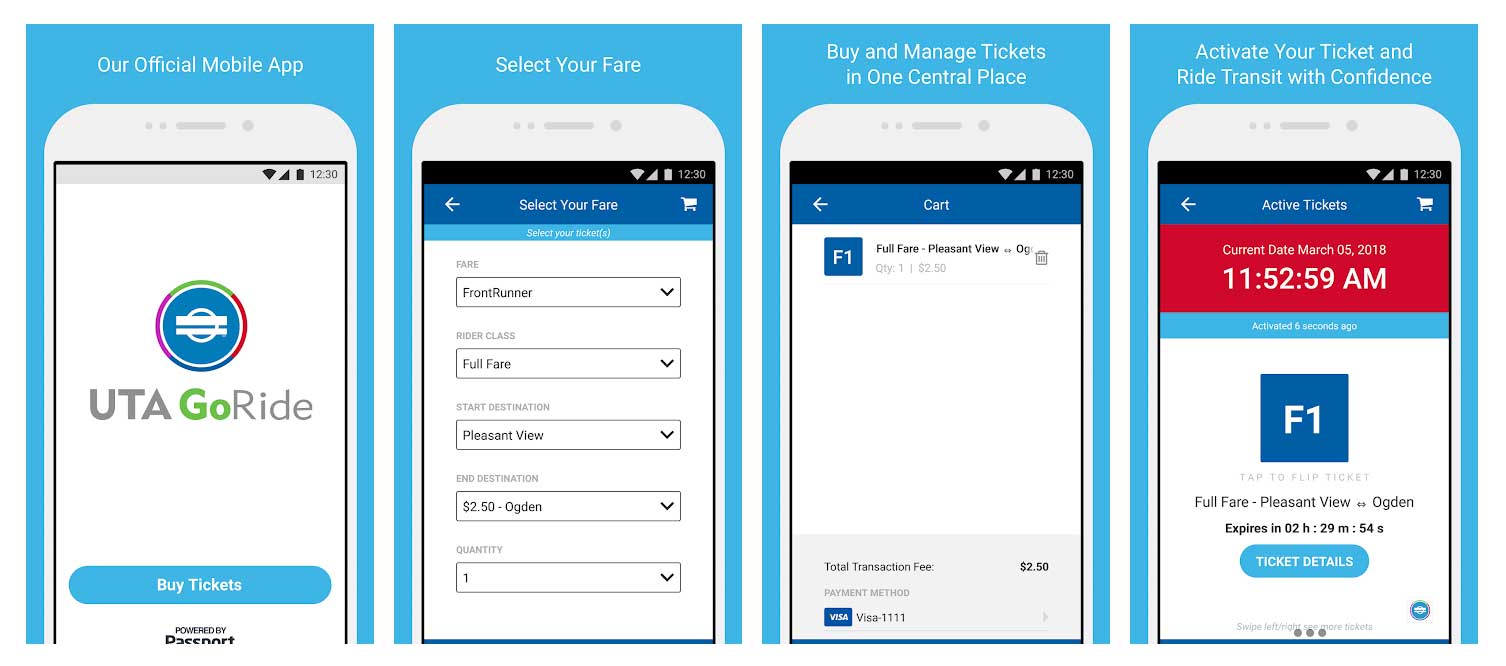
Fares can be purchased with cash on the bus or at a ticket vending machine. Smartphone users can purchases tickets via the UTA GoRide app, available for download from the Apple App Store or Google Play. UTA also offers a reloadable payment card, known as the UTA FAREPAY Card. Riders receive a discount of approximately 20% on cash fares when using the FAREPAY Card.
Reduced fares are available to seniors over 65 years of age, medicare cardholders and people with disabilities who have been pre-qualified by the transit authority. Additional information on fares and passes is available on the UTA website.
Paratransit in Salt Lake City
In accordance with the Americans with Disabilities Act, UTA operates a paratransit service for qualified disabled people in Salt Lake City. The UTA describes a thorough application and review process for determining eligibility for paratransit services, which can be found on the UTA website. For those riders who are approved, UTA Paratransit fares are set at $4 each way.
For more information on riding public transportation in Salt Lake City with a wheelchair or other type of disability, consult the UTA website.



